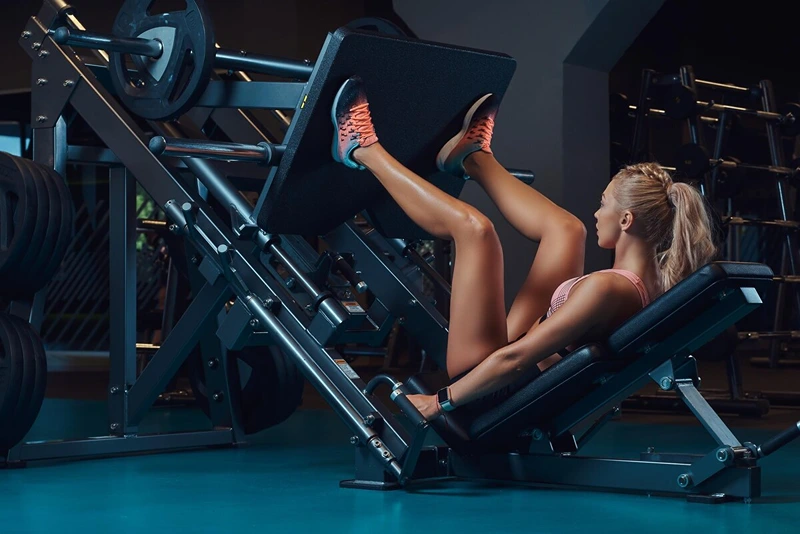In This Article
Introduction to Gym Workout Routines
Starting a fitness journey can be daunting, especially when you’re unsure about the best workout routines to follow. At Rac Women, we believe in empowering individuals with the right knowledge and tools to achieve their fitness goals. This article will delve deep into gym workout routines, focusing on the popular 6-day workout schedule.

Understanding the 6-Day Gym Workout Schedule
The 6-day gym workout schedule has gained immense popularity among fitness enthusiasts. This routine is designed to target different muscle groups, ensuring balanced training and optimal results. Whether your goal is muscle gain, weight loss, or overall fitness, this schedule can be tailored to meet your needs.
What is a 6-Day Workout Routine?
A 6-day workout routine involves training six days a week, focusing on different muscle groups each day. This approach ensures that each muscle group gets adequate rest before being worked again, promoting recovery and growth. Table: 6-Day Workout Routine Breakdown
| Day | Muscle Groups Targeted |
|---|---|
| 1 | Shoulders, Chest, Core |
| 2 | Triceps, Legs |
| 3 | Back, Core |
| 4 | Triceps, Biceps, Legs |
| 5 | Rest Day |
| 6 | Shoulders, Chest, Abs |
| 7 | Biceps, Back |
Effectiveness of the 6-Day Training Split
The 6-day training split is effective for several reasons:
- Consistent Training: Training six days a week ensures consistency, which is key for muscle growth and strength development.
- Balanced Muscle Work: By targeting different muscle groups, you prevent overtraining and ensure balanced muscle development.
- Flexibility: This routine can be tailored based on individual goals, making it suitable for both beginners and advanced trainers.
Benefits of Strength Training:
- Increased muscle-fiber size
- Enhanced muscle contractile strength
- Strengthened tendons and ligaments
- Reduced risk of injuries
Strength training, when done correctly, can overhaul one’s fitness levels, providing remarkable results. It’s not just about lifting weights; it’s about doing it right and understanding the science behind it. Bodybuilding.com offers a comprehensive guide on starting with weight training, emphasizing the importance of proper form and technique.

Factors to Consider for Your Training Split
When deciding on a training split, several factors come into play:
- Training Experience: Beginners might need a different approach compared to seasoned gym-goers.
- Age: Younger individuals might recover faster than older adults.
- Fitness Goals: Weight loss, muscle gain, or maintenance requires different approaches.
- Rest and Recovery: Ensuring muscles have adequate time to recover is crucial.
Table: Factors to Consider for Training Split
| Factor | Consideration |
|---|---|
| Training Experience | Choose routines suitable for your level. |
| Age | Adjust intensity and rest periods based on age. |
| Fitness Goals | Tailor routines to meet specific goals (e.g., weight loss, muscle gain). |
| Rest and Recovery | Ensure at least one rest day or active recovery day in your weekly schedule. |
Common Mistakes to Avoid
Starting a new workout routine can come with its set of challenges. Here are some common mistakes to avoid:
- Using Excessive Weight: Start with a manageable weight and gradually increase as your strength improves.
- Rushing Through Repetitions: Slow, controlled movements are more effective.
- Inadequate Rest: Rest periods between sets are crucial for muscle recovery.
- Ignoring Proper Form: Proper technique is essential to prevent injuries and ensure effectiveness.
Tips for Beginners:
- Always bring a towel to the gym.
- Rerack weights after use.
- Avoid extended rest on machines, especially if someone is waiting.
- Keep distractions, like cell phones, away during workouts.
Level 5: Enlist in the Barbell Battalion
The power of barbell exercises is undeniable. They’ve transformed countless lives, including those of our team at Rac Women. Two exercises stand out in their impact: the squat and the deadlift. These old-school strength training exercises can make you stronger than you’ve ever imagined. Why Barbell Training?
- Full Body Workout: Both squats and deadlifts engage multiple muscle groups, ensuring a comprehensive workout.
- Strength and Endurance: Regularly performing these exercises can significantly increase your strength.
- Bone Health: Weight-bearing exercises are known to improve bone density, crucial for women as they age.
Starting with the Squat Before diving into barbell squats, ensure you’ve mastered the goblet squat with a 45 lbs dumbbell and can perform 10 push-ups (either on knees or regular) and 10 dumbbell rows with a 20 lb dumbbell for each arm. Understanding the Squat Rack There are different types of squat racks:
- Traditional Squat Rack: The barbell is not connected to the apparatus.
- Smith Machine: The bar is attached to the apparatus. It’s different from a traditional squat rack and might not offer the same benefits.
If your gym doesn’t have a traditional squat rack, consider switching gyms or sticking to dumbbell exercises. Your First Barbell Squat
- Setup: Ensure the bar is at the right height. If unsure, ask a gym staff or watch tutorials.
- Position: Stand with feet shoulder-width apart. Place the bar on your upper back, holding it with both hands.
- Movement: Lower your body by bending your knees. Keep your back straight. Go down until your thighs are parallel to the ground, then push back up.
Progressing to the Deadlift The deadlift is another powerful exercise that targets the back, glutes, and legs.
- Setup: Stand with feet hip-width apart. The barbell should be over the middle of your feet.
- Grip: Bend at the hips and knees, grip the barbell with both hands.
- Lift: Keep your back straight, lift the bar by straightening your hips and knees. The bar should be close to your body throughout the movement.
Tables for Quick Reference
| Exercise | Primary Muscles Worked | Equipment Needed |
|---|---|---|
| Squat | Quads, Glutes, Hamstrings | Barbell, Squat Rack |
| Deadlift | Back, Glutes, Hamstrings | Barbell |
| Push-up | Chest, Shoulders, Triceps | None |
| Dumbbell Row | Upper Back, Biceps | Dumbbell |

| Tips for Success |
|---|
| Always warm up before starting your routine |
| Maintain proper form to avoid injuries |
| Gradually increase weights |
| Listen to your body and rest as needed |
Frequently Asked Questions
Yes, but ensure you’re giving adequate rest and not overexerting.
Stop immediately. Consult a trainer to check your form. If pain persists, see a doctor.
Listen to your body. When the current weight feels easy, consider adding more. But always prioritize form over weight.
Ellen Crandall
Meet Ellen, your fitness compass in the world of athletics, training, and gym culture. With a commitment to well-being and a penchant for all things workout-related, Ellen is here to guide you on your journey to a healthier, fitter you. Join the fitness revolution, led by Ellen, and embrace the power of an active lifestyle.




